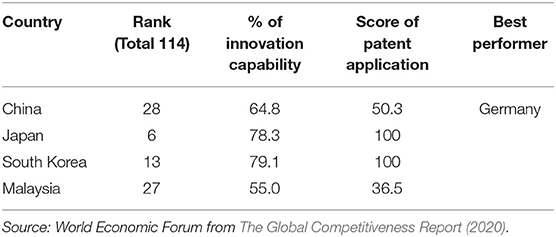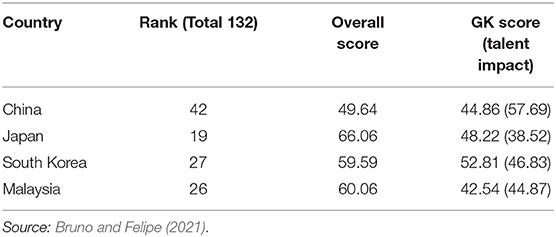- 1Perdana Center Science, Technology and Innovation (STI) Policy, Razak Faculty of Technology and Informatics, Universiti Teknologi Malaysia, Kuala Lumpur, Malaysia
- 2School of Business, The State University of Zanzibar, Zanzibar, Tanzania
Over the past decades, the Southern Governments have sought to make innovation a key issue in their policy agenda as a catalyst toward sustainable development. Many southern countries realised that innovation with the use of science and technology had a vast potential in the economic transformation of a nation and as means to economic growth. In formulating or implementing innovation policy, it is imperative to identify the possible gaps in the system and set viable interventions in promoting innovation strategic focus. As a matter of fact, innovation is termed as the evolution and implementation of an improved product or service that uses a new marketing approach through rejuvenating the workplace and reengineering the marketing philosophies to cater to the external marketplace. Contemporary nations recognised the role innovation can play in the economic transformation along with incorporating the environmental challenges that are to be faced in due time. Employment growth will accompany innovation as new avenues of study and new knowledge creation exist. Looking at Malaysia, it can be said that the 10-10 MySTIE was introduced into the mainstream for the adoption into science, technology, and innovation (STI). Their intentions were admittedly commendable; however, the implementation process was wanting. Policies are the brainchild of a group of people who have adequate knowledge of the subject matter. The implementation roadmap must be clearly charted for any policy to take a life of its own. The common failing in most policies are that policies are well thought of, but a roadmap to realise the policy is seldom implemented and seldom monitored, hence many well-intentioned policies fall by the wayside. Every policy should have an implementation body and a monitoring body who answer directly to the Minister concerned. Whilst crafting a policy, it would be essential that the financial commitment and allocation are identified. For innovation policy to take shape, there is a need to commit to finance to realise the policy, where the systems must be in place, skilled labour must be made available, and where necessary, lure foreign skills to participate in the policy implementation, who are the participants that are required and their availability. Every conceivable actor must be requested to be involved. In implementing or choosing to implement a policy or a series of policies, it is crucial to identify the main actors, subsidiary actors, financial requirements and budgeting, identify the implementers, identify the monitors or monitoring agencies, set up a software programme, as well as churn out a quarterly report and the Minister concerned to sit with the implementers, the monitoring agencies and financial players to gauge the policy progress. In taking a critical view of the policy stage to implementation stage, the need to keep in mind the market segment is critical as innovation and its final product are aimed at attracting the market segment the innovation is targeting. Thus, this paper discusses in detail the enhancement of the socioeconomic development spurred through the STI policy framework into the nucleus off mainstream society toward the achievement of the aforementioned 10-10 MySTIE framework.
Introduction
Malaysia gained its independence in 1957 from Britain. The three major races that dominated and inhabit Malaysia are Malays, Chinese, and Indians, with different origins, ethnicities, and diverse culture. In the early years, economically the country was highly dependent on rubber and tin export and agriculture. The country's economic landscape has been transformed since 1970 with the introduction of the New Economic Policy (NEP). This policy is primarily aimed to eradicate poverty and restructure the social imbalance between the Malays and Bumiputeras and other races, namely the Chinese and Indians. NEP has successfully increased the nation's Gross Domestic Product (GDP) up to 8.3% and is declining the unemployment rate.
Evolution of STI Policy in Malaysia
Malaysia transformed from an agriculture-based country to a manufacturing based country in the early 1980's. With this transformation, the first National Science and Technology (S&T) (1986–1989) policy was introduced in 1986. This policy is mainly focusing on laying the foundation of science and technology in the country. Moving forward, in the second National S&T Action Policy (2002–2010), the initiatives were to build and strengthen the capacity and capability in science, technology, and innovation (STI). With the formation of the Ministry of Science Technology and Innovation (MOSTI), the National Policy on Science, Technology and Innovation (DSTIN, 2013–2020) was introduced. The third national policy is aggressively focusing on mainstreaming STI and its governance.
Recently, the MOSTI has launched the National Policy and Master Plan on STI 2021–2030 in December 2020. The National STI 2021–2030 has 6 thrusts, 20 strategies, and 46 initiatives as illustrated in Figure 1.
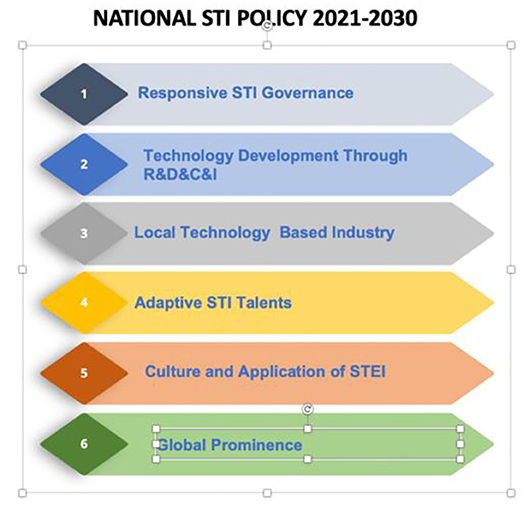
Figure 1. National Policy and Master Plan on Science, Technology, and Innovation (STI) 2021–2030. Source: MOSTI (2021).
The 10-10 Malaysian Science, Technology, and Innovation (MySTIE) framework is another initiative under the MOSTI that aimed at boosting economic growth to achieve the goal of making Malaysia a high-tech country besides reducing dependence on foreign technology and foreign labour. The combination of DSTIN and the 10-10 MySTIE framework ensures that the advancement of science and technology keeps pace with the country's economic growth, and thus help the country to achieve the goal of increasing its Gross Domestic Product (GDP) to RM 3.4 trillion by 2030. DSTIN 2021–2030 has six key strategies to drive and shape the Malaysian economy for the next decade, and the 10-10 MySTIE framework is the catalyst for the nation to achieve that goal. The DSTIN 2021–2030 main goals are to ensure the country could achieve its vision to become a high technology driven nation and at the same time become a technology producer from technology user.
Malaysia innovation policy began from the time of the national independence in 1957. It developed in two stages, which are pre-industrialisation (1957–1970) and industrialisation (1971–current). The evolution of the STI Policies started with the National S&T Policy (1986–1990) with the implementation in the 5th Malaysia Plan. For greater institutionalisation of the STI policy, the 5th Malaysia Plan added a new chapter dedicated to science and technology (OECD, 2016). The Second National Strategic Plan (NSTP) (2002–2010) focused on the impact of STI initiatives on growth and competitiveness. Several industrial policies also established institutions and provided incentives to encourage industrial research and development (R&D) and improve industrial R&D competencies.
Several industrial policies also established institutions and offered incentives to encourage industrial R&D and improve industrial R&D competencies. The Industrial Master Plan (IMP1), introduced by the Ministry of International Trade and Industry (MITI) in 1986, the Action Plan for Industrial Technology Development (Government of Malaysia, 1990), IMP2 (1996–2005), and IMP3 (2006–2010) were among the policies. In order to strengthen STI policy coordination and centralisation, Malaysia tried very hard to realise it between the mid-1980s and 2010. Nevertheless, lack of coordination across STI strategies (namely NSTP, IMP, and the Five-Year Malaysia Plan) caused much overlaps.
The 10-10 MySTIE framework on the other hand would create impact by bridging between socioeconomic development and collaborative networks with the STI priorities. The framework will become the guiding tools to deep dive and serve as the base matrix for engagements with all relevant ministries, agencies, industries, and researchers toward identifying the National Niche Areas (ASM, 10-10 MySTIE Framework). Figure 2 illustrates the 10-10 MySTIE framework.
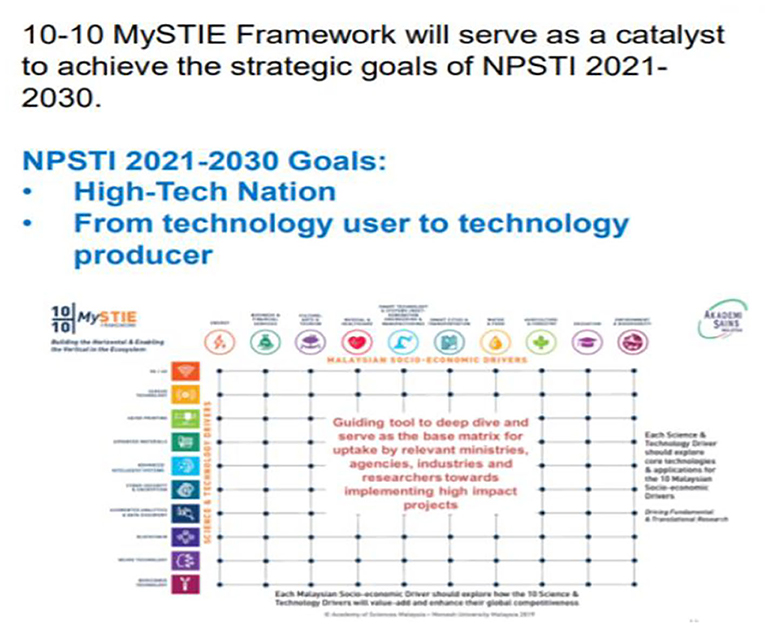
Figure 2. The 10-10 Malaysian Science, Technology, and Innovation (MySTIE) Framework. Source: ASM (2021).
Malaysia Socio Economic Development
Malaysia continues its progressive initiatives toward a developed nation with the continuation of the National Vision Plan (NVP) and the National Transformational Policy (2001–2020). In 2019, the Shared Prosperity Vision 2030 (SPV 2030) was announced in line with the country's commitment toward achieving Sustainable Development Goals (SDGs).
As shown in Figure 3, the transformation of highly dependent agriculture to manufacturing based economy progressively started in the late 1980's. The National Development Policy (NDP) was introduced beginning from 1990 onwards. Although the main focus is to become a developed country by 2020, the agenda to reduce poverty and restructure the social imbalances among races still continue. The manufacturing sector has rapidly expanded since then. NDP has successfully increased GDP from RM 79 billion in 1990 to RM 290 billion in 2000. It also has improved the quality of citizen life and reduced the poverty rate from 17% in 1990 to 7% in 2000.
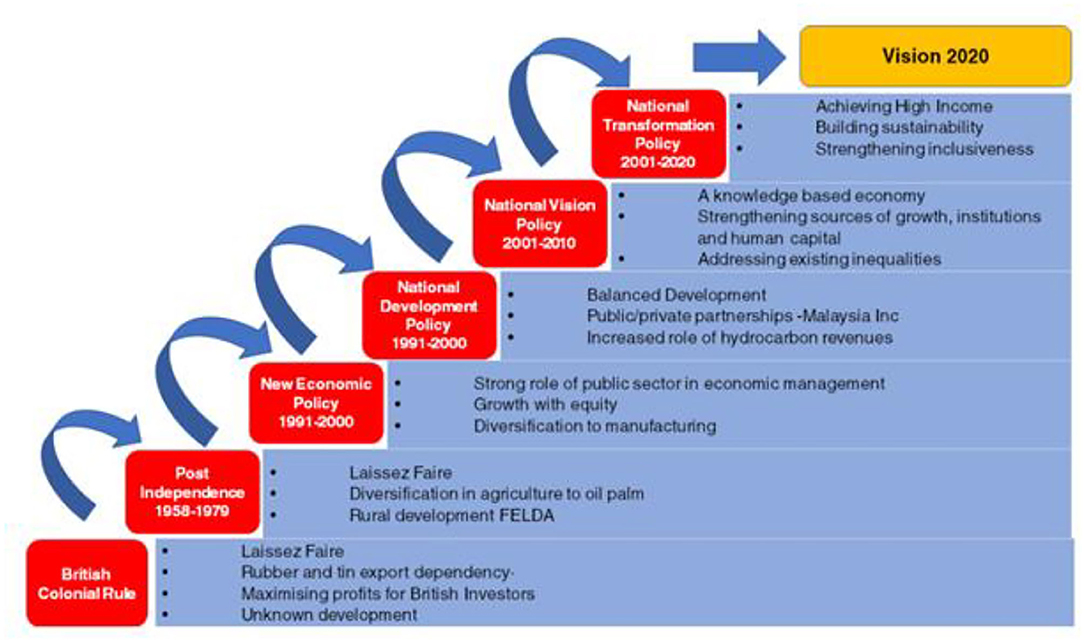
Figure 3. Malaysian economy transformation. Source: Charting the Economy: Early 20th Century Malaysian Contrasts, Shah (2017).
Various successful case studies can be seen from the implementation of the STI policies and frameworks available in Malaysia toward the country's socio-economic development. Notably, the Malaysia Social Innovation (MySI) Fund was initiated by the MOSTI under Yayasan Inovasi Malaysia (YIM), a grassroots innovation development agency (MOSTI, 2021), to enhance the well-being of the community with priority for the B40 community (Noor Rizawati and Mustafa, 2019) through the implementation of innovative local research and development (R&D) technology application projects that has been developed and ready to implement covering the energy; business and financial services; culture; health; smart technology; smart cities and transportation; water and food; agriculture and forestry; education; as well as the environment (Tung and Magiswary, 2021). Since its initiation in 2015, MySI has channelled a total fund of RM 48 million to 234 innovative local technology application projects throughout Malaysia, which have benefited more than 100,000 Malaysians in terms of socio-economic development (YIM, 2021a,b).
It is also notable to highlight that the STI endeavours by various government ministries and their agencies are not focusing only on one selected community, where it varies across different spectrums of society (Suzana Ariff, 2013). Other than the previously discussed B40 community initiative by the MOSTI, another highly impactful STI programme toward the Malaysian socio-economic development called Malaysia Technolympics. This programme is dedicated for the school children aged 6 years old to 17 years old, who will be the catalyst for the development of a country that is in line with the government's aspiration of 60:40 Science:Non-Science enrolment amongst school children at the higher secondary in Malaysia through the 60:40 Policy. This is achieved through the conceptualisation of the experiential learning to foster awareness, interest, the creation of ideas and the application of science, technology, engineering, and mathematics (STEM) (Nurul, 2021). This endeavour is expected to transform the current statistics of 47.18%of students choosing the STEM field compared to the anticipated 60% (Ministry of Education, 2020), thus leading the nation toward the socio-economic development as envisaged in the SPV 2030.
Based on these two case studies, it is apparent that important roles played by the MOSTI, which are in line with the direction of the STI policy in the country, are contributing significantly to the Malaysian socio-economic development. The commitment by not only the government and its ministries and agencies, but also the private sectors, is substantial in helping to culturise and develop a progressive society that supports STI and the SDGs.
Sustainable Development Goals (SDGs)
On 25 September 2015, during the United Nations General Assembly in New York, Malaysia agreed with other 192 world leaders to adopt the 2030 Agenda for Sustainable Development (2030 Agenda). In lieu of this Agenda, Malaysia is globally committed toward a more sustainable, robust and comprehensive development, with 17 Sustainable Development Goals (SDGs) and 169 targets.
Although the SDGs are not legally binding, the Malaysian Government is committed to establishing a nationwide framework to achieve the 17 SDGs. In line with this, Economic Planning Unit (EPU) is responsible as a coordinating agency for Sustainable Development inclusive of SDGs (global agenda which replaces the Millennium Development Goals (MDGs). In order to make sure that the SDG is aligned with the country's development, a comprehensive integration is progressively held between the national development plans (beginning from 11 MP, Mid Term Review of 11, 12, and 13 MP).
The Shared Prosperity Vision (SPV) 2030 has been announced in 2019. The 12 MP is inclusive of three development dimensions—economic empowerment, environmental sustainability, and social reengineering. All of these will further develop the implementation of the SPV 2030. The fundamental principle of SPV 2030: economic development over “equitability of outcome” and highlighted eight enablers and seven strategic thrust with 15 guiding principles.
Challenges Faced by the 10-10 (MySTIE) Framework Implementation
The ultimate objective of the STI policy is to support national socio-economic transformation. However, the success rate of the 10-10 MySTIE framework implementation will be heavily dependent on the acceptance of the fact that the forefather's formulation is not responsive to the current economic environment. The country has yet to be able to move the nation from developing status to developed status. Using the “Omar model” as guiding strategies, this study will determine the challenges that will be faced by the 10-10 MySTIE framework based on the current situation as well as recommend actions as a way forward to ensure that the path of success is achievable.
Science, Technology, and Innovation (STI) for Policy
The first main challenge that may be faced by the 10-10 MySTIE framework is the utilisation of the STI for policy. The 10-10 MySTIE framework is an initiative that will seek for a synchronisation of the STI collaborative efforts that cut across all 32 ministries in Malaysia. However, currently, the country has only one Ministry who is responsible for STI development. As aforementioned earlier in the introduction and background section, socio economic development is the end product of innovation resulting from the commercialisation of science and technology knowledge. A holistically total acceptance is based on the fact that STI is crucial as the only tool to ensure that the country achieves progress in socioeconomic development. With this understanding, Malaysia can then push the agenda to the highest level in order to ensure that the nation shall invest in infrastructure more than ever to accelerate economic competitiveness. In doing this, STI will be the backbone. For 2021, the MOSTI, as the main ministry and the STI driver, has allocated RM 935.4 million for their total expenses. This amount is too small to compare to their real responsibility in terms of ensuring that STI will move the economic status of Malaysia.
Science, Technology, and Innovation (STI) Infrastructure
The second challenge faced by Malaysia is the STI infrastructure in the country. The 10-10 MySTIE framework has identified 10 socioeconomic drivers to the country. Priority to the mentioned drivers needs to be established by ensuring that the research and development (R&D) infrastructure of the country can either be established or pushed to the next level from its current state. To elaborate on this matter, the discussion will be divided into 3 different elements that revolve around R&D infrastructure and related activities. The first element is the financial aspect of R&D activities. From the allocation of RM 935.4 million granted to the MOSTI, additional of RM 38 million is solely to be used for the coronavirus disease 2019 (COVID-19) related studies and RM 425.2 million are for the development expenses of which the ministry uses mainly for both start-up innovation companies as well as to ensure the development of STI at large. The grants are also embedded in the budget to the Ministry of Higher Education (MOHE). Apart from pockets of money available in the MOSTI and MOHE, the pool of budget is also available in other sources of income generating ministry to name a few such as the Ministry of Housing and Local Government (KPKT), Ministry of Agriculture and Food Industry (MAFI) and Ministry of Primary Industry (MPI). In brief, the pool of money is available to do R&D under different labels of each ministry. With the diverse location of money, the probability of the R&D impact undertaken by each ministry will be diluted as there is no single control of the budget. If the stick and carrot methods are adopted, the grants are the carrot. However, the stick to control the grants is unavailable to handle the impact in unison.
On top of the money matters, the second element that revolves around the STI infrastructure is the commercialisation of the R&D products. In many cases, the commercialisation was halted due to slow or no acceptance from the market and in some worst case scenarios, the R&D was never able to penetrate the market at all. The researchers need to make sure that the product has a chance to complete its development and be able to reach the market. At the end of the R&D activities tunnel is the need to ensure that the products are marketable. There are three stages of research, the first is the basic research, second stage is the applied research, and the final stage is the development research. By completing all three stages then only the declaration can be announced that the R&D results have the ability to be pushed to the market and undergo the new product development cycle and finally ready for commercialisation.
The third element that is related to the STI infrastructure is the talent development in STI. This matter will become the major issue in the MySTIE. The pool of research talents reside heavily in the universities. As mentioned earlier, in the stages of product commercialisation, more research talents need to be allocated to the commercialisation area to enable proper market research. Study shows that the local researchers are located heavily in the universities. These researchers should be sitting in the industry instead in order to bridge the knowledge gap between the product R&D and product commercialisation. The industry has to be groomed with knowledge from books and at the same time, the researchers have to study the mechanism of production in operation and it is not as simple and straightforward as doing a pilot plant operation. In short, the biggest hurdles that the 10-10 MySTIE has to handle is the STI Structure of the country itself. There is a big scope that has to be evaluated accordingly. As a nation, it is needed to take stock of what is available in hand and to map the stock in terms of strength and weakness before the journey is started in following the framework as advised by the MySTIE. In the long run, the framework aims to transform Malaysia into a technology developer or technology creator, and no longer just a mere user of technology. While Malaysia can be considered great in many fields, it is still not enough, where in fact the nation must move beyond to make the 10-10 MySTIE framework a success. The country does not have specific priority areas to ensure that Malaysia emerges as a high-tech nation in the coming decade.
Establishing a Relationship Between STI and the Private Sector
The third challenge is to push the 10-10 MySTIE framework in ensuring that the relationships between the STI and the private sector are to be established. Research & Development & Commercialisation & Innovation (R&D&C&I) activities of the manufacturing industry, especially among SMEs, are often limited due to resources. As a result, most of the R&D&C&I efforts have been implemented by the government and Multi-national corporations (MNCs). Even though there are some R&D activities conducted by public research institutions, the results of the findings do not match the needs of the industry (Centre for Entrepreneur Development and Research, 2018). Industry players are more likely using existing technology without making improvements, causing the industry to distance itself, thus lagging behind in terms of technology when compared to Newly Industrialised Economies.
This development is seen as quite important in driving the research and innovation (R&I) sector in Malaysia. Both initiatives, the DSTIN and the 10-10 MySTIE framework, provide an ecosystem for the people to leverage on their innovative abilities and enable the country to move one step closer to becoming a knowledge-based economy by 2030. Yet, it is seen that there is a lack of collaboration among universities and the economy sector in Malaysia, for example the manufacturing industries. There are many research grants issued to the universities with the aim to boost the economy via innovation and commercialisation, yet no proper links that can bridge the two sectors in boosting the economic growth of the country exist.
Acceptance by the Community
The fourth challenge is to ensure that the framework is aligned with the 10-10 MySTIE framework and is thus accepted by the community at large. Technology is the main component in boosting the future economy of the country, and, as known, these technologies are STI-driven. Malaysia has put effort into taking off the initiatives by introducing a comprehensive and realistic policy, yet there are certain challenges that need focus. The combination of the DSTIN and the 10-10 MySTIE framework ensures the advancement of science and technology is in line with the socio-economic development of the country.
Malaysia has transitioned from capacity building to being an innovation-driven nation as proven by the pace-setters. On the other hand, the country also has laggards, especially in industries related to basic needs, such as clothing, shelter, and food industries that are not in the same phase like others.
Internationalisation of the 10-10 Malaysian Science, Technology, and Innovation (MySTIE) Framework
The fifth challenge is internationalisation of the 10-10 MySTIE framework result to ensure that it is up to the standard as aligned by the SDGs. To achieve the intended aim so that Malaysia is on par with others in this segment, the nation competitiveness needs to be gauged as the indicators recorded by the World Economic Forum (WEF)1 defines competitiveness as a set of institutions, the policies and the factors that determine the level of productivity of a country. In achieving this, Malaysia needs to address the first fact, that is, the issues in the said matter existed. From that realisation, there is a need to benchmark the nation to either developed nations or other developing countries that have greater indexes than Malaysia. According to the Global Innovation Index 2020, Malaysia is listed as the 8th in Asia and is able to get the 2nd as an innovative country from 37 countries listed in the upper middle-income economy after China; however, Malaysia is yet to be categorised under the high-income economic block. In benchmarking, Malaysia as a nation is able to do gaps analysis when it is compared with the upper performer. However, a strategic benchmarking is to be done as there is a need to ensure that the target is doable and in the long term will enable the country to transform the current situation to the next level. During the reign of Tun Mahathir Mohammed in his term as the fourth Prime Minister, Malaysia can identify with the agenda of Look East Policy (LEP), which normally targeted either Japan or South Korea; however, over times the LEP diluted in the Malaysian's working culture.
Governance of the 10-10 Malaysian Science, Technology and Innovation (MySTIE) Framework
The final challenge that is foreseen is the governance of the 10-10 MySTIE framework. The framework is set to be achieved by the year 2050. Malaysia has embarked on the second phase, namely the Probable Future (2021–2035) and later to the next phase of possible future (2036–2050). For the past 2 years, the coronavirus disease 2019 (COVID-19) pandemic has shown that Malaysia as a nation is still yet to be able to sustain its basic needs as a nation. To steer the 10-10 MySTIE framework to the correct direction, there is a need to decide and double the effort to the specific socioeconomic driver, such as water and food, agriculture, and education. This is to ensure that despite the lost time in dealing with the pandemic, Malaysia is still able to restart the work and align it to the original plan. Apart from the identification of national basic needs, there is no coordination and priority areas set in the framework. In thriving through socio-economic development, the policy must clearly set the designated ministries/agencies that should lead certain initiatives. Initiatives without proper and systematic coordination is a big challenge in realising the mission.
Other challenges identified are also in the form of the local content used during the products commercialisation. The use of local materials is important to assist the domestic industry in socio-economic development. However, the manufacturing sector in Malaysia is import intensive, especially electrical and electronics (E&E) and chemicals are partly due to a very complex global supply chain (Abhirami, 2012). Most of the industry players, especially MNCs are under utilising local materials to support operations due to the low technological capabilities of local firms.
Apart from the importance of researchers as knowledge workers, Malaysia also faces main challenges in terms of skilled workers. The shift from labour-intensive production to sustain increased productivity and per capita income requires innovation and not just imitation from others. In the Malaysian context, Total Factor Productivity (TFP) is not like The Republic of Korea and Taiwan despite strong growth and an increase in the sophistication of export products. This factor is caused by the state over-reliance on MNCs and foreign direct investment (FDI) in increasing exports and technology transfer. Furthermore, Malaysian companies cannot afford to create technology that is a prerequisite in innovation and productivity improvement (Cherif and Hasanov, 2015).
The challenges foreseen by this study do not mean that the framework aligned by MOSTI is hard to achieve, however there is a need to tackle the issues and challenges accordingly in order to try to lessen the impact of the issues. Also, in order to recommend a good escape route, it is needed to analyse the root cause of the issues in detail. Understanding the country's position and rearranging the nation's capability will help Malaysia to steer itself to the correct path of economic development. For over 60 years since the independence, Malaysia has been using a similar framework in achieving success, thus with the correct mapping of vertical and horizontal of MySTIE's framework, it is hoped to give the “on point” direction on our future direction in the next 30 years.
Analysis of Data Gathered
According to the UNESCO Institute of Statistics Database, in 2020, the world's top 10 leaders' research and development (R&D) investment spending ranged from USD 40.1 billion to almost USD 600 billion. The gross domestic expenditure on R&D (GERD) and the purchasing power parity (PPP$) as well as R&D intensity (percentage of gross domestic product (GDP) devoted to R&D activities) is the most common indicator to see the allocation for R&D activities undertaken by any government.
Malaysia's spending of R&D is only RM 9,280.5 million, which consists of 1.3% of GDP. The number of researchers per million inhabitants is 2,054. To push the nation to the next level, there is a need to ensure that the R&D investments of Malaysia to be increased by the year 2035 as the first timeline. In explaining this matter, the science and technology drivers of advanced materials will be used and mapped to the socio-economic drivers of smart cities and transportation as in Figure 4.
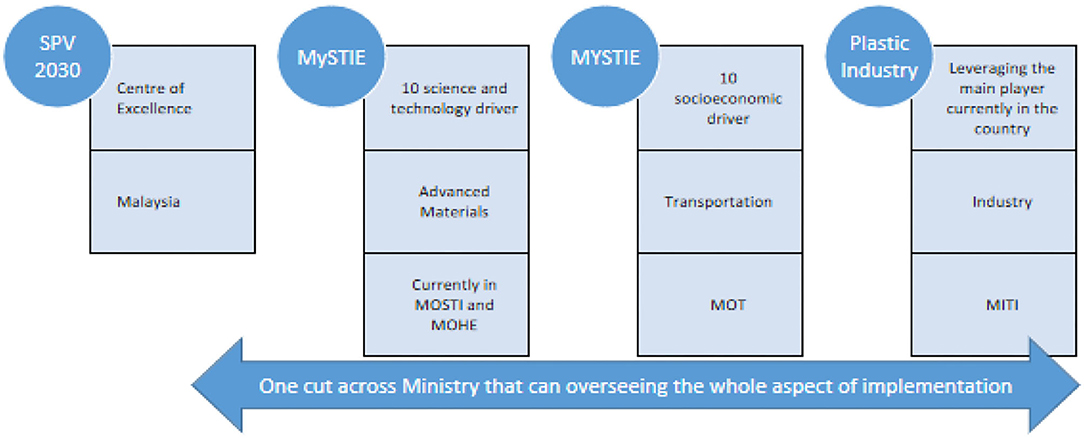
Figure 4. Mapping the 10-10 MySTIE Framework to the Shared Prosperity Vision 2030 (SPV 2030). Source: ASM (2021).
Transportation involves the integration of physical and natural infrastructure with advanced technologies to deliver sustainable, resilient, and prosperous living conditions. If it is scaled down to the usage of plastics and composite as advanced material, the currently available industry that is in operation is yet to be able to produce niche products. To achieve this intention, the country needs the establishment of a Centre of Excellence to help both academia and industry work in a conducive environment. However, the financial aspect and the responsibility will not be able to be pulled out in synergy as all segments are under the purview of several ministries that have diverse responsibilities. Each of the sub elements will have their own strength that can be leveraged as well as weakness that can pull down the objective from being achieved. One of the main crucial matters is the GERD budget for each of the related ministries. As such, there is an urgent need to increase the national budget on each of the mentioned ministries. The only question that will pop up now is, who will be the ultimate lead in ensuring this initiative can be successfully undertaken.
In explaining the R&D infrastructure, it can be seen that the first element crucial to the matters is to align all R&D activities results to scale up to commercialisation. Data as in Figure 5 shows that as a nation, the experimental development is only about 24.50% and more is spent on the R&D resources in doing basic research and applied research. As mentioned earlier, the Malaysia's GERD is at about 1% compared to South Korea, who spends about 4.8% of their GERD and allocated 63.83% of their national spending on experimental development. Other countries that have more than 50% of experimental development are Japan and Denmark. The neighbouring country, Thailand, is also charting more than 50%, at about 63.26% of experimental development.
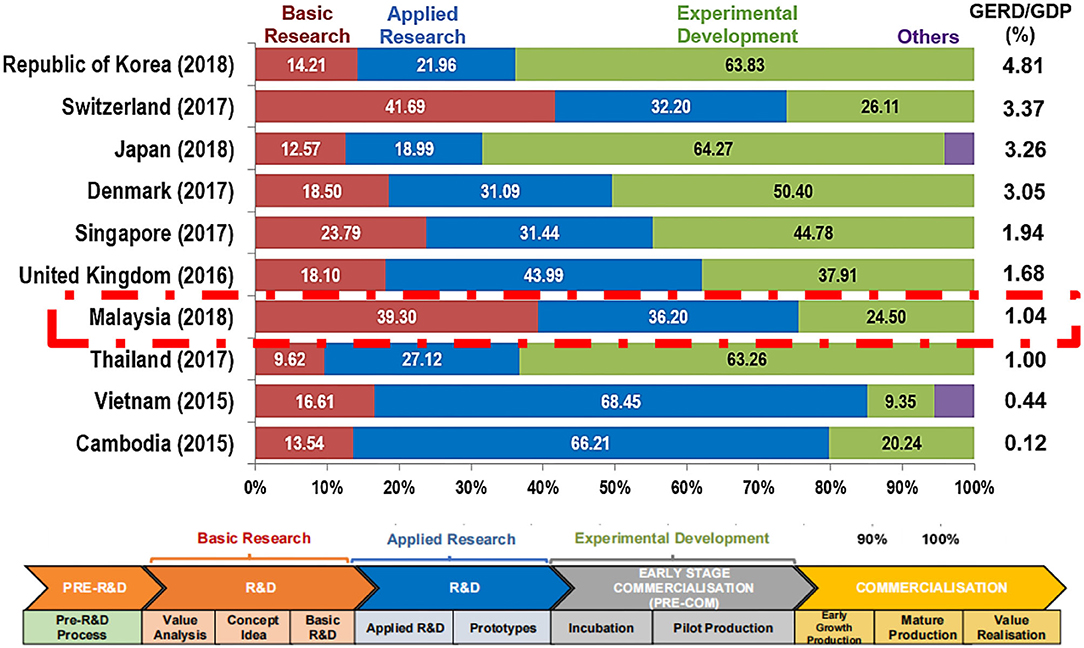
Figure 5. World research segment. Source: UNESCO (2019).
According to Akademi Sains Malaysia, in 2018 only 15.81% of Malaysian researchers are based in the industry. Majority 80% of the researchers are in the universities and the balance of about 4.14% are working in Non-Government Organisations (NGOs). South Korea, however, has about 82% of researchers working in their business enterprises, which shows that the researchers are focusing on the commercialisation aspect in R&D. Vietnam started their economy later than Malaysia, however they managed to allocate about 24.06% of their researchers in the industry. On this matter, Vietnam is cashing out on the fact that they have the advantage of being late comers and they are able to shop for the latest technology structure, in a sense, they are able to cut short their learning curve by adopting and adapting to the new technology right at the beginning. Figure 6 shows the percentage of researchers' availability according to the working segment.
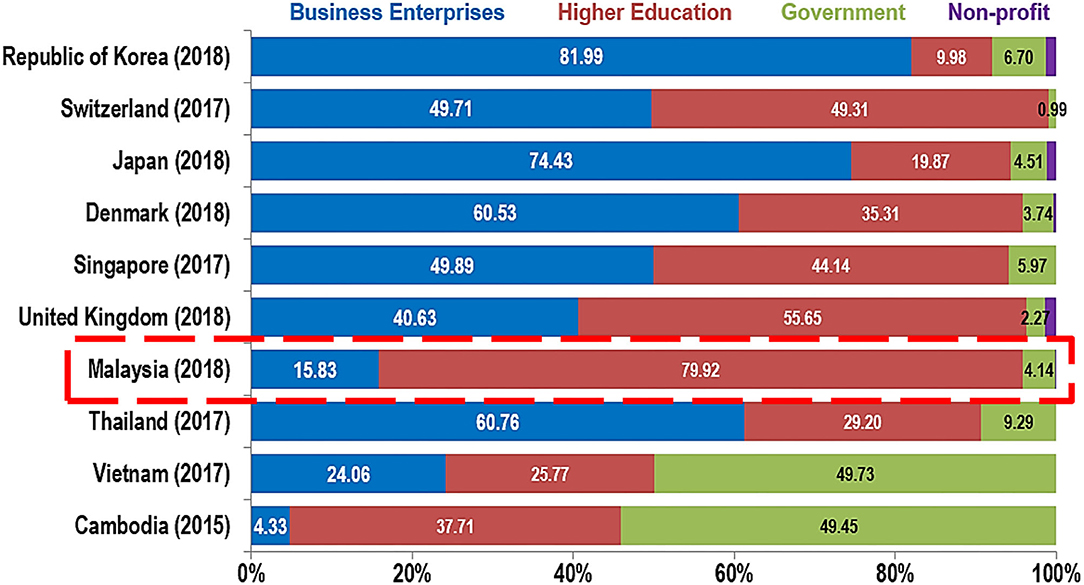
Figure 6. Researchers and talent placement. Source: UNESCO (2019).
From both Figures 5, 6, it can be concluded that the Malaysian's R&D infrastructure is one of the main big challenges that is faced by the nation in achieving the 10-10 MySTIE framework and in the long run will dampen the target to shift the current developing status to at least 'economic in transition' by 2030.
In discussing the internationalisation aspect, there is a need to revisit the LEP and be steadfast on the mapping of the 10-10 MySTIE framework drivers to the nation. In Figure 7, it is apparent that the strength of South Korea, Japan, and China in terms of delivering technology is based on their market. This strength diversified in terms of types of technology, yet in unison in terms of using ICT as a whole in transforming the economic status of the countries. The total numbers of patent filed shows that the three mentioned countries are strategically moving from the traditional economic and revolutioning and using the Industry 4.0 and also the knowledge as the backbone of transforming the socioeconomic aspect of the countries.
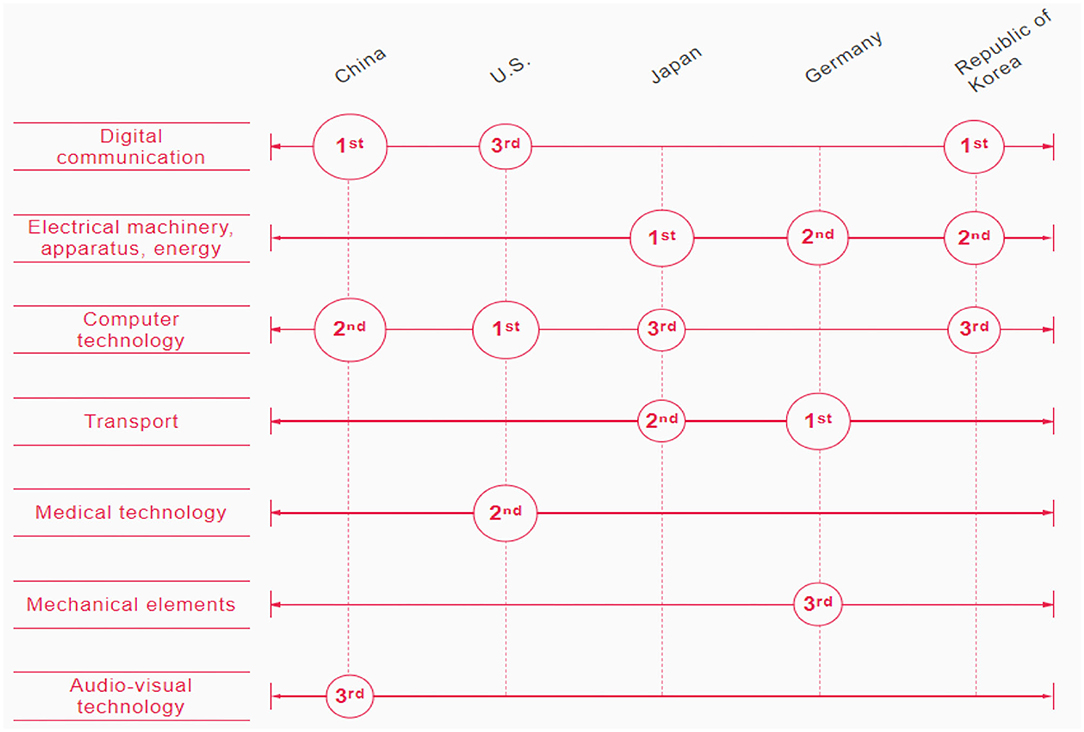
Figure 7. Technology specialist. Source: WIPO (2020).
According to the World Economic Forum from The Global Competitiveness Report (2020), China is ranked 28th out of 144 countries listed. Referring to China, Japan, and South Korea, it can be seen that the innovation capability and patent filing are closely related and determined by the competitiveness of any country. Table 1 illustrates the detailed data on the innovation capability index and the countries performance.
Based on the data, the initial deduction by this study is that in order to be competitive, the innovation capability of Malaysia needs to be increased and one way to achieve that is to ensure that this innovation capability is able to increase research work that will later lead to the patent filing. This is the clear sign that the technology is owned by Malaysia and not just a user of technology. This is the reason why there is an urgent need for the LEP to be visited by the government of Malaysia in order to adopt the 10-10 MySTIE framework effectively.
The government introduced the National Transformation Policy (NTP) under the 11th Malaysia Plan (2016-2020), which aims to turn innovation into wealth through integrated research, development, commercialisation, and innovation (R&D&C&I) initiatives that generate high returns on investment over time and stimulate productivity growth. As a result, the government increased its R&D&C&I projects in order to obtain a long-term competitive advantage. The domestic R&D&C&I ecosystem would be strengthened by the R&D financing fund, which would help the country reach its goal of 3.5% gross domestic expenditure on research and development (GERD) to gross domestic product (GDP) by 2030, up from 1.08% presently. Looking at the statistics as in Figure 8, the majority of Malaysian research is focusing on applied research, however this does not always translate into high levels of knowledge transfer and commercialisation.
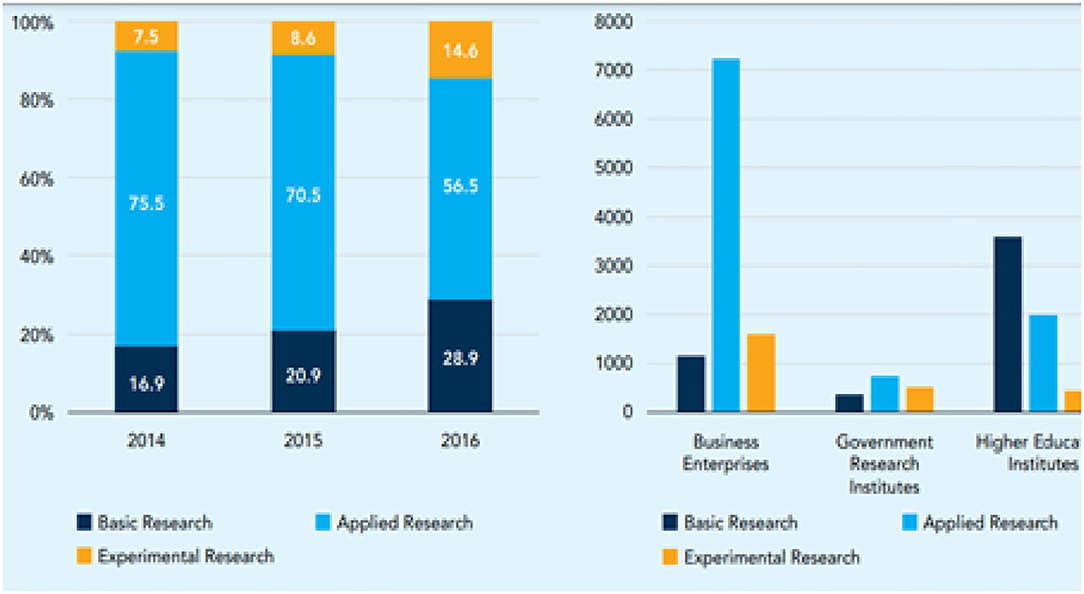
Figure 8. Gross domestic expenditure on R&D (GERD) by research orientation (2014–2016) and research orientation by sectors (2016)—R&D expenditure RM millions. Source: MOSTI (2017).
According to World Bank (2021), who undertook a survey for technology transfer activities between 2019 and 2020, commercialisation of research outputs is still quite low in both Public Research Organisation (PROs) and Research Centres (RCs). Despite the fact that some PROs engage in activities such as contract research or technological services, only a few PROs have achieved effective commercialisation of research outputs through licencing. A significant number of RCs participate in contract research agreements and have some experiences in commercialising their research outputs through spin-offs or start-ups, with some RCs claiming that their respective universities assisted them in establishing the spin-off or start-up. It should also be highlighted that the majority of PROs and RCs are having difficulty in commercialising their work. Only a few of them have had consistent success, being at the vanguard of industry-relevant research and commercialisation. The Malaysian Palm Oil Board is one such example. Figure 9 illustrates Propensity to Engage in Technology Transfer Activities: Percentage of Entities.
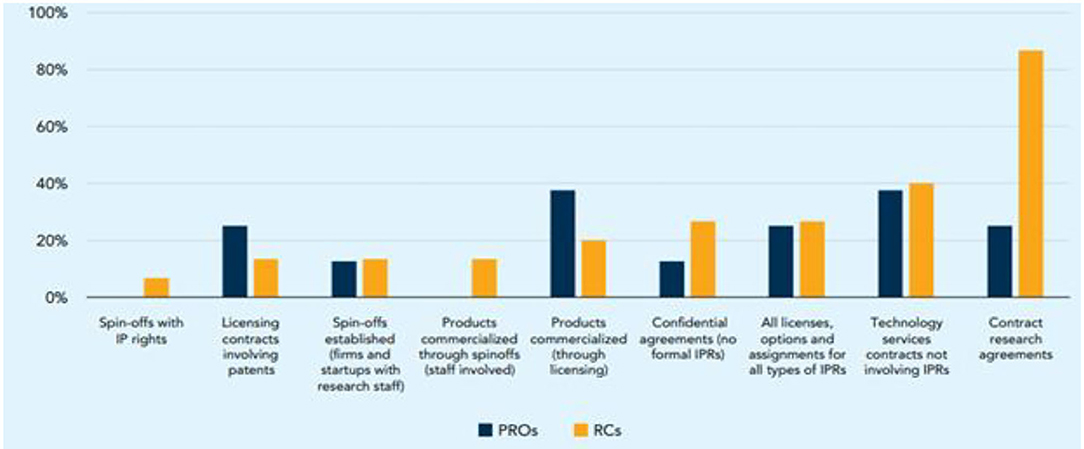
Figure 9. Propensity to engage in technology transfer activities: percentage of entities. Source: World Bank (2021).
To analyse further on the skilled workers, the data reported in The Global Talent Competitiveness Index (GTCI) (The Global Talent Competitiveness Index, 2020) is referred to, where the focus on China, Japan, and South Korea based on the GTCI 2020 rankings is addressed. The pillars of the rank are based on 2 areas of input and output, the input consists of 4 main pillars, which consist of attracting talent, growing talent, retaining talent, and enabling pillar. Collectively, the pillars are called GTCI. As for the output, the score will look at the 2 outputs, namely the Vocational and Technical Skills as well as High Level Skills. For the purpose of this paper, the output of GTCI is studied on the High Level Skills, labelled as the Global Knowledge Skills (GK), which defined the level of knowledge workers that later will push to the economic impact as it is evaluated by indicators of innovation, entrepreneurship, and the development of high-value industries. The details are shown in Table 2.
From the data, it can be seen that Japan is leading Malaysia, South Korea, and China in terms of the likelihood of the country to be chosen as the destination for skilled workers. If the data is dissected, Japan's score for talent impact is quite low at about 38.52%. This does not show any absolute data as “not likeable” as Japan is highly saturated with about 75% researchers located in their business entities as explained in Table 2. In brief, skilled workers are important and needed by any country to build up the nation as the knowledge residing in the workers will change the way surrounding people react and cultivate a positive working culture in the workplace.
From the data analysis, it is shown that the STI is important to Malaysia to build up the new economic environment to push the nation to the next level. The 10-10 MySTIE framework is a good framework by itself, however it still needs a good environment in order for the development to take place positively. As such, this paper would like to recommend a few actions to be considered in order to assist the MOSTI in implementing the success of the framework.
Recommendations
In order to push the Malaysian's socioeconomic to the next level, it is empirical to have one dedicated Ministry as a key Ministry appointed in overseeing all the STI elements embedded across all areas. The Government of Malaysia has to ensure that there will be a leader to undertake all national key areas to be developed. The 10-10 MySTIE framework is in need of a lead Ministry incorporating all strategies to be undertaken. The gaps of responsibilities are ensured by having a dedicated ministry overseeing the STI policy embedded in it. As the responsibility is cut across others, the need for a budget for GERD will be established. With the broader view, in the long run, it will imprint to the nation that the need for R&D is to be increased accordingly.
As there was once one Ministry that leads and oversees all initiatives with STI's element, it is an urgent need to look at the financial aspect in ensuring this matter to be workable. Apart from yearly budgets allocated for the 10-10 MySTIE framework, incentives need to be offered to either the universities, private companies or NGOs that undertake the commercialisation of R&D. Currently, the incentives for R&D status companies and contract R&D companies are offered by the government of Malaysia to any private company. The incentives are only worth the final stage of the commercialisation of a new product development. In the future, more lucrative incentives are to be offered to the company that have completed their journey from the early stage until the commercialisation of the products. These incentives will entice any private company to collaborate with public research institutions. Apart from the taxation element to the company, the government of Malaysia shall also consider perks to be offered to the income made by individual researchers. As they are using knowledge in their daily life, these researchers need to be offered lower income tax.
The next recommendation is to change the way of thinking about innovation and research by ensuring that all initiatives are impact-driven. This makes the industry superior through product development using local technology and ultimately, helping the country's economic recovery plan as well as improving the quality of life of the people.
Pace-setter industries should uplift the laggards by sharing technological knowledge and expertise to move together in achieving the intended goal. The 10-10 MySTIE framework enables the Malaysian research and innovation (R&I) sector to move again through comprehensive collaboration between industry, academia and social innovation groups. Therefore, proper channels are needed for the three components to work together in making the framework workable. The goal is to realise the priority areas of STI that will improve the country's key socio-economy. This enables industry players in all sectors of the economy to become more competitive and makes Malaysia an admired player in certain fields.
In talent development, collaboration in a form of public private partnerships needs to be established to bring the local talent to the industry. This has to be a collaboration effort from all stakeholders. From the industry point of view, the industries need to ensure that the industries have the buying power to compensate for the knowledge workers from the universities. With the attractive incentive offered to the private stakeholders, it is hoped that it can bind the partnerships stronger.
In terms of governance, Malaysia as a nation needs to revisit and evaluate the implementation and perhaps to take a look back at reusing the LEP that previously had succeeded in putting the country to be one of Asia's Tigers prior to the 1999 recession. The pandemic is also a blessing in disguise as many countries are resetting their milestones and reevaluating their strategic plan in place. With the effort made earlier by the Academy of Sciences Malaysia (ASM) in terms of establishing the 10-10 MySTIE framework, it is positive that the plan will work and move the nation accordingly.
As a sum to the whole recommendation, the integrity of the R&D environment can be kept at maximum level with the introduction of a solid law to govern the financial aspect of grants. Over the years, it can be seen that researchers walk away from their research without having to deal with the law enforcement as the binding platform despite the fact that the research is unable to be commercialised. Unfortunately, this too can be seen from the practise among the business people. Thus, it is hoped that stern law imposed on the R&D people will help to ensure that integrity is kept at the maximum.
To assist the transformation of the nation using the 10-10 MySTIE framework, there is a need to leverage on digital advancement to accelerate the delivery system. As the world is reset to the new line due to the COVID-19 pandemic, digitalisation will help the country to focus more effectively on communication among stakeholders by minimising the gap produced during the daily operation. With the help of 10-10 MySTIE framework, a more standardised procedure can be achieved. Each element of the framework can be monitored effectively by all relevant ministries as all open data are readily available. The open data methods will also help prompt decision making by the stakeholders.
It is hoped that all recommendations are able to cover all elements as prescribed by Omar models in ensuring the STI transformation for socio economic development of a nation. Knowledge is a key in ensuring all elements of science and technology can be mapped to the socioeconomic drivers. Malaysia needs to ensure that during the whole process, evaluation is undertaken on timely basis in order to help the country to using the resources effectively.
Conclusion
Science, Technology, and Innovation2 (STI) initially aimed at emphasising the inevitability of an ecosystem-based approach to sustainable nation-building. As one of many southern countries, Malaysia in particular is embarking on a journey of socio-economic transformation propelled by the construction of a robust STIE ecosystem, the introduction of the 10-10 MySTIE framework is critical. As a method of improving economic competitiveness and quality of life, the framework will pave the road for the country to strengthen its inventive and creative capability.
The 10-10 MySTIE framework will serve as a catalyst to achieve the goal through setting 30 priority areas for R&D in the country. The MOSTI also announced 10 STIE leapfrogging programmes, including the creation of Technology Commercialisation Accelerator (TCA), Malaysia Science Endowment (MSE) and National Technology Innovation Sandbox (NTIS) as well as the establishment of the National Vaccine Centre. It is to drive local and commercial technology development efforts as a result of the country's R&D. The Ministry will ensure that science and technology can benefit all parties inclusively without being marginalised. It further creates a scientific-minded society toward a developed and high-tech country. In this regard, the new policy outlines the existence of a science community centre with the concept of design space in strategic locations in urban and rural areas.
The 10-10 MySTIE framework provides a systematic approach to transforming Malaysia into a knowledge-based economy. With the 10-10 MySTIE framework, Malaysia can transform into a country that develops technology or inventors of technology, and no longer just a mere user of technology. This framework links STI with the development of the Malaysian economy, formulated by incorporating the field of science and technology as well as socio-economy. This enables inclusive development to focus on the STIE priority areas to ensure that Malaysia emerges as a high -tech nation in the coming decade. Therefore, the thinking about innovation and research must be changed by ensuring that all initiatives are impact-driven. This makes the Malaysian's industry superior through product development using local technology and ultimately, helping the country's economic recovery plan as well as improving the quality of life of the people.
Besides that, the 10-10 MySTIE framework enables the Malaysian Research and Innovation (R&I) sector to move again through comprehensive collaboration between industry, academia and social innovation groups to realise the priority areas of science, technology and innovation that will improve the country's key socio-economy. Hence, this will enable the industry players in all sectors of the economy to become more competitive.
This framework aims to bring together a wide group of stakeholders to work together to build a strong national STIE ecosystem that will allow for the robust development of sectors, and eventually, a shared prosperity for all Malaysians. It will bring partners from all walks of life together, leaving no one behind. Therefore, it is important to note that the 10-10 MySTIE framework is an integrative tool that allows the government, researchers, innovators, companies, and communities to work together to change Malaysia into a peaceful, wealthy, and sustainable society.
Author's Note
STI policy is a strategic focus for the most south countries in realising the sustainable development. The STI has becoming the global agenda that promoting socio development with the emphasis of using the local resources very efficient and effectively.
Data Availability Statement
The raw data supporting the conclusions of this article will be made available by the authors, without undue reservation.
Author Contributions
All authors listed have made a substantial, direct, and intellectual contribution to the work and approved it for publication.
Conflict of Interest
The authors declare that the research was conducted in the absence of any commercial or financial relationships that could be construed as a potential conflict of interest.
Publisher's Note
All claims expressed in this article are solely those of the authors and do not necessarily represent those of their affiliated organizations, or those of the publisher, the editors and the reviewers. Any product that may be evaluated in this article, or claim that may be made by its manufacturer, is not guaranteed or endorsed by the publisher.
Footnotes
1. ^Annual Report 2019-2020. Retrieved from: http://www3.weforum.org/docs/WEF_Annual_Report_2019_2020.
2. ^Keynote Speech Delivered By Tan Sri Omar Abd Rahman. Science, Technology and Innovation (STI) For Socio-economic Transformation. Video session used in Foundation of Policy STI class.
References
Abhirami, S. (2012). Export Expansion and Imported Input Intensity in the Manufacturing Sector. Dicapai daripada. Available online at: http://www.ukm.my/fep/perkem/pdf/perkemVII/PKEM2012_5A1 (accessed February, 2021).
ASM (2021). Enhancing Innovation and Creation of Impactful Research Using the 10-10 MySTIE Framework. Kuala Lumpur: Academy of Sciences Malaysia.
Bruno, L., and Felipe, M. (2021). The Global Talent Competitiveness Index (GTCI) 2020: Global Talent in the Age of Artificial Intelligence. Fontainebleau: INSEAD.
Centre for Entrepreneur Development Research (2018). Manufacturing in Malaysia: Main Issues and Challenges. Available online at: https://www.cedar.my/images/industryarticles/12 (accessed February, 2021).
Cherif, R., and Hasanov, F. (2015). The Leap of the Tiger: How Malaysia Can Escape the Middle-Income Trap (15-131). Kuala Lumpur: International Monetary Fund.
DSTIN (2013–2020). Dasar Sains, Teknologi Dan Inovasi Negara. Available online at: http://pmr.penerangan.gov.my/wp-content/uploads/2020/01/1.-DSTIN-2013-2020-Malay
Government of Malaysia. (1990). Action Plan for Industrial Technology Development (APITD-1990-2011).
MOSTI (2017). National Survey of Research and Development (R&D) in Malaysia. Putrajaya: Ministry of Science, Technology and Innovation.
MOSTI (2021). Ministry of Science, Technology and Innovation. Available online at: https://www.mosti.gov.my/en/ (accessed February, 2021).
Noor Rizawati, N., and Mustafa, D. S. (2019). Malaysia's multidimensional efforts to implement new innovation paradigms. Int. J. Innov. Technol. Exploring Eng. 8, 9–12.
Nurul, S. (2021). Techlympics to Encourage Young Innovators to Generate Ideas, Says MOSTI. Petaling Jaya: The Malaysian Reserve.
OECD. (2016). Development Co-operation Report-2016: The Sustainable Development Goals as Business Opportunities. OECD.
Shah, S. N. (2017). Chatting the Economy: Early 20th Century Malaya and Contemporary Malaysia. Oxford: Oxford University Press.
Suzana Ariff, A. (2013). Strengthening Malaysia's scientific and technological development through human capital development. Procedia Soc. Behav. Sci. 91, 648–653.
The Global Talent Competitiveness Index (2020). Available online at: https://www.insead.edu/sites/default/files/assets/dept/globalindices/docs/GTCI-2020-report.pdf (accessed February, 2021).
The Global Competitiveness Report (2020). Available online at: http://www3.weforum.org/docs/WEF_TheGlobalCompetitivenessReport2020 (accessed February, 2021).
Tung, S. S., and Magiswary, D. (2021). “Knowledge creation in Malaysia: a SWOT analysis,” in Knowledge Management International Conference (KMICe) 2021, 1 February 2021 (Kuala Lumpur).
UNESCO (2019). Global Investment in R&D Factsheets 2020. Available online at: http://uis.unesco.org/sites/default/files/documents/fs59-global-investments-rd-2020-en.pdf (accessed February, 2021).
WIPO (2020). WIPO Data Statistics. Available online at: https://www.wipo.int/edocs/infogdocs/en/ipfactsandfigures/ (accessed February, 2021).
World Bank. (2021). Propensity to Engage in Technology Transfer Activities: Percentage of Entities, World Bank Technology Transfer Survey Report.
YIM (2021a). Siaran Media: Manfaat untuk B40 Menerusi Program Malaysia Social Innovation (MySI) 2021, 29 July 2021. Kuala Lumpur: Yayasan Inovasi Malaysia.
YIM (2021b). Yayasan Inovasi Malaysia. Available online at: https://www.yim.my/ (accessed February, 2021).
Keywords: open data, open government data, open science, data ecosystem, open innovation
Citation: Ariffin AS, Ismail S and Ali SS (2022) Enhancing Socio Economic Development Spurred Through STI Policy Framework Into the Nucleus Off Mainstream Society in Malaysia. Front. Polit. Sci. 4:878847. doi: 10.3389/fpos.2022.878847
Received: 18 February 2022; Accepted: 18 March 2022;
Published: 20 May 2022.
Edited by:
Mohammed Andres Mostajo-Radji, University of California, Santa Cruz, United StatesReviewed by:
Paulina Carmona-Mora, University of California, Davis, United StatesLuisa F. Fernanda Echeverría-King, Corporación Universitaria del Caribe, Colombia
Copyright © 2022 Ariffin, Ismail and Ali. This is an open-access article distributed under the terms of the Creative Commons Attribution License (CC BY). The use, distribution or reproduction in other forums is permitted, provided the original author(s) and the copyright owner(s) are credited and that the original publication in this journal is cited, in accordance with accepted academic practice. No use, distribution or reproduction is permitted which does not comply with these terms.
*Correspondence: Aini Suzana Ariffin, YWluaXN1emFuYUB1dG0ubXk=
 Aini Suzana Ariffin
Aini Suzana Ariffin Syuhaida Ismail1
Syuhaida Ismail1 Salum S. Ali
Salum S. Ali